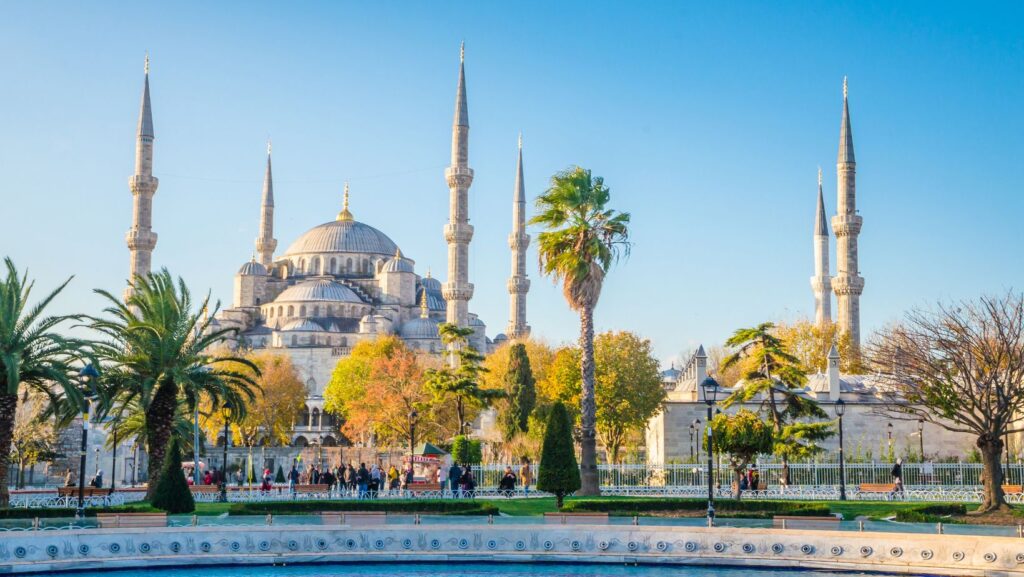Istanbul, the city where East meets West, has always offered travelers something extraordinary. Its skyline of domes and minarets, the aroma of roasted chestnuts drifting through ancient bazaars, and the call to prayer echoing over the Bosphorus create a setting that feels timeless. Yet beyond its historical beauty, Istanbul has quietly taken on a new identity. Today it is not only a destination for culture and cuisine but also a global center for transformation, where visitors come to enhance both body and spirit through medical tourism.
Where Heritage Meets Modern Healing
Every year, millions arrive to explore landmarks such as the Hagia Sophia, the Blue Mosque, and Topkapi Palace. Increasingly, many of these visitors also come seeking personal change. In 2024, more than two million medical tourists traveled to Turkey, and nearly half of them chose Istanbul. They come for hair restoration, dental aesthetics, rhinoplasty, and other cosmetic procedures, drawn by the city’s reputation for advanced healthcare at accessible prices.
Research shows that cosmetic treatments in Istanbul cost between 50 and 70 percent less than in the United States or the United Kingdom. A standard FUE hair transplant ranges from 1,500 to 3,500 dollars, rhinoplasty from 2,500 to 3,500, and breast augmentation from 3,000 to 4,000. These fees often include hotel stays, airport transfers, medications, and aftercare appointments. For many, this affordability allows them to pair treatment with sightseeing, turning recovery into a restorative holiday.
The Experience of Transformation

The idea of combining healthcare and travel has become part of a larger global movement known as transformation tourism. Patients typically plan a stay of three to ten days, allowing time for both surgery and rest. All-inclusive packages make the experience seamless, covering medical consultations, accommodation, and sometimes guided tours.
For example, those visiting for a hair transplant in Turkey often schedule the procedure early in their stay, then spend the following days enjoying gentle activities such as ferry rides along the Bosphorus or visits to local cafés. These low-impact experiences support recovery while immersing patients in the city’s vibrant culture.
Studies indicate that such cultural engagement can enhance mental well-being, helping patients feel more positive during healing. Istanbul’s unique blend of hospitality and history creates a calm environment that fosters emotional comfort as much as physical recovery.
A Hub of Excellence
Behind Istanbul’s popularity lies a network of over sixty internationally accredited hospitals and hundreds of specialized clinics. The city ranks first globally for hair transplants, with more than half a million procedures performed each year. Surgeons are often members of respected organizations such as ISAPS and EBOPRAS, ensuring high standards of care.
Clinics like Asli Tarcan Clinic in Istanbul reflect this new era of healthcare tourism. Known for its commitment to quality and patient satisfaction, the clinic welcomes international visitors for treatments ranging from hair restoration to aesthetic surgery. Its team combines medical precision with an understanding of cultural diversity, offering a reassuring experience for patients from across Europe, Africa, and the Americas.
This combination of skilled professionals, advanced techniques, and personalized care positions Istanbul at the heart of medical tourism in Istanbul, an industry valued at nearly four billion dollars in 2025 and projected to exceed ten billion by 2032.
Planning the Perfect Transformation Trip
Preparation begins weeks before arrival. Patients are advised to share medical histories, complete basic blood tests, and arrange virtual consultations. Many clinics provide digital planning tools and coordinators fluent in multiple languages to help with visas, accommodation, and itinerary building.
Recovery time varies depending on the procedure. Hair transplant patients usually resume normal activities after a week, while rhinoplasty and breast augmentation may require two to three weeks before engaging in longer excursions. During the early phase, visitors are encouraged to enjoy Istanbul at a slower pace.
The best recovery activities are gentle and scenic. A sunset cruise on the Bosphorus, a quiet walk through Gülhane Park, or tea in the gardens overlooking Topkapi Palace allow rest without strain. After the first week, exploring cultural landmarks becomes easier, from the mosaics of Hagia Sophia to the hidden beauty of the Basilica Cistern.
Safety First
While success rates remain high in accredited clinics, medical tourism still requires careful planning. Risks such as infection or scarring are rare but possible. Experts advise verifying that a facility holds JCI accreditation and that the operating surgeon is certified by recognized medical associations. Travel insurance covering elective procedures adds extra security.
Health authorities report that most complications occur in non-accredited centers offering unrealistically low prices. Choosing reputable clinics ensures not only safety but also follow-up care. Istanbul’s leading hospitals now provide 24-hour monitoring and virtual post-treatment consultations to maintain continuity once patients return home.
Exploring Istanbul During Recovery
What makes Istanbul unique for recovery is its ability to offer peace and stimulation in equal measure. Its history spans more than two millennia, yet its rhythm feels contemporary. After initial rest, many visitors enjoy light sightseeing, such as visiting the Spice Bazaar or sipping Turkish coffee along the Galata waterfront.
The Blue Mosque’s spacious courtyards provide serenity for reflection, while the nearby Arasta Bazaar offers handicrafts without heavy walking. The Princes’ Islands, reachable by ferry, present car-free streets lined with Ottoman villas and sea views that soothe the mind. For those seeking evening culture, the Hodjapasha Cultural Center hosts mesmerizing Whirling Dervish performances that require little physical exertion but leave lasting emotional impact.
A Journey Beyond Aesthetics
The combination of healthcare and heritage offers more than physical transformation. Many visitors describe a renewed sense of self that comes from healing in a city so steeped in resilience. Istanbul has rebuilt itself repeatedly through empires and centuries, a story that resonates with those undergoing personal change.
Medical tourism has become a bridge between cultures, connecting surgeons and patients across continents. For Istanbul, it represents a natural extension of its identity as a crossroads of trade, art, and spirituality. The same spirit that once drew merchants to the Grand Bazaar now attracts modern travelers seeking confidence, renewal, and cultural connection.
